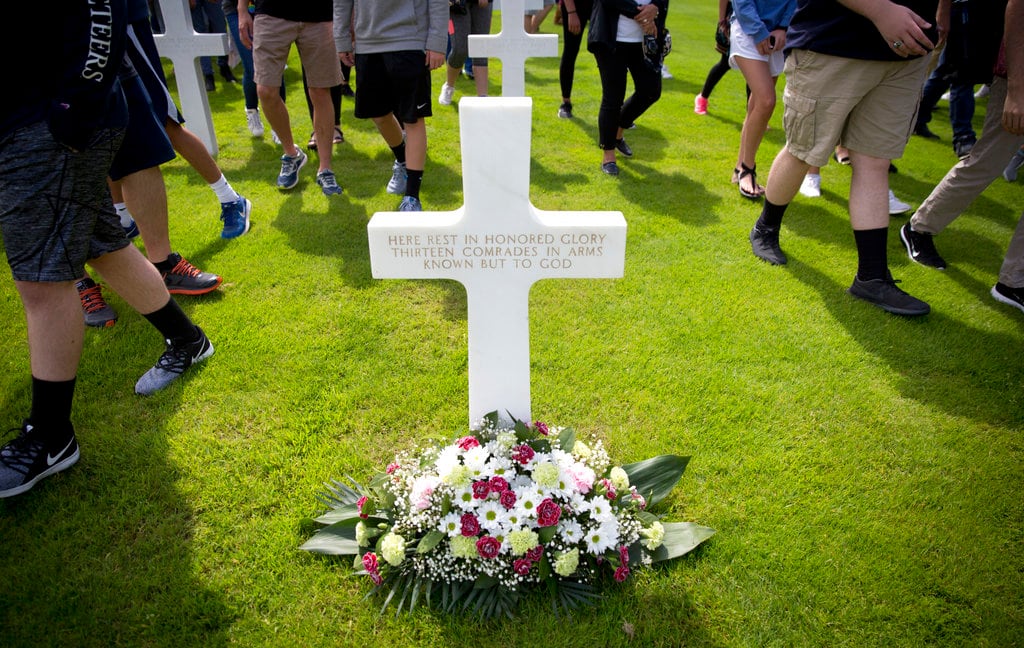For Patrick Allie, museum curation is a family affair.
Allie grew up watching his father run the Army museum at Fort Leavenworth, Kansas, for about 25 years. Now, the junior Allie is preparing his own Army museum for its first top-to-bottom renovation.
Founded in 1905, the Rock Island Arsenal Museum in Illinois is the Army’s second oldest — and it will soon receive its first complete renovation in more than 80 years.
A part of the 30-museum Army Museum Enterprise, the mission of Rock Island Arsenal has remained telling the story of the Arsenal as it relates to its impact on greater service — and the community.
“Our mission was not to tell the whole Army story, or to tell the history of all small arms,” Allie, the museum’s director, told Military Times during a private showing of the renovation process. “[The mission is] to tell the history of the arsenal, through its people, through its commands, through the things it’s made.
“While we still tell a very Army story, we also we tell that all through the lens of Rock Islanders.”
The Rock Island Arsenal hosts a number of important commands for the service. First U.S. Army, the oldest and longest established field Army, is located on the island. Army Joint Munitions Command, responsible for “logistics sustainment, readiness and acquisition support” of ammunition, is also headquartered there, along with Army Sustainment Command and a branch of Army Contracting Command, according to the Rock Island Arsenal website.
Sitting in the middle of the Mississippi River, the Arsenal is located at the only point where the river flows East to West. That very place — the upper Mississippi River — is where the museum’s storytelling begins, with the mapping of the region by Zebulon Pike. Pike would eventually be captured by Spanish soldiers in the American Southwest, but not before gaining enough notoriety to have Pike’s Peak in Colorado named in his honor.
From the initial founding of Fort Armstrong on the Arsenal’s location to the Blackhawk War, the exhibits unfold in a horseshoe shape in the limestone building that hosts the museum. Through the early centuries of the Rock Island Arsenal to the present day, the museum has touched on the important people, weapons and stories that took place in the community.
But one of the museum’s major efforts, Allie said, is to highlight the sheer amount of capabilities the arsenal has produced and distributed to the service over the years. In fact, all of the service’s 30 museums house at least one weapon or product made at the Rock Island Arsenal.
“I think that’s really telling in a lot of ways, just the global reach that we have had and the impact on the warfighter that this community has had,” Allie said.
Today, as the Army in particular suffers from a recruiting crisis, Allie believes museums offer one way to positively influence the perception of possible recruits — and children who might be interacting with the military for the first time.
“Recruiting is a big thing right now, and for many people, this is the first contact they’re going to have with with their country’s military,” Allie said. “We need to make sure it’s a positive experience, and we need to show them all the ways that they can serve.”
Some of the inspiration for the museum’s renovation was particularly special for Allie — considering his relation to those providing input.
While planning out renovations, Allie considered how children like his own — 5-year-old Walker and 3-year-old Weston — would experience a museum differently than other age groups.
As such, hands-on exhibits rather than small placards of information were taken into account during planning, Allie said. The museum will have significant hands-on sections, along with enlarged photos from the museum’s extensive photograph archive.
“Having kids and being able to know how they understand things, how they see the world ... some kids are very tactile,” Allie said. “Some kids are very visual, and certainly within this space, it hits on all of those different aspects.”
Zamone “Z” Perez is a reporter at Military Times. He previously worked at Foreign Policy and Ufahamu Africa. He is a graduate of Northwestern University, where he researched international ethics and atrocity prevention in his thesis. He can be found on Twitter @zamoneperez.




